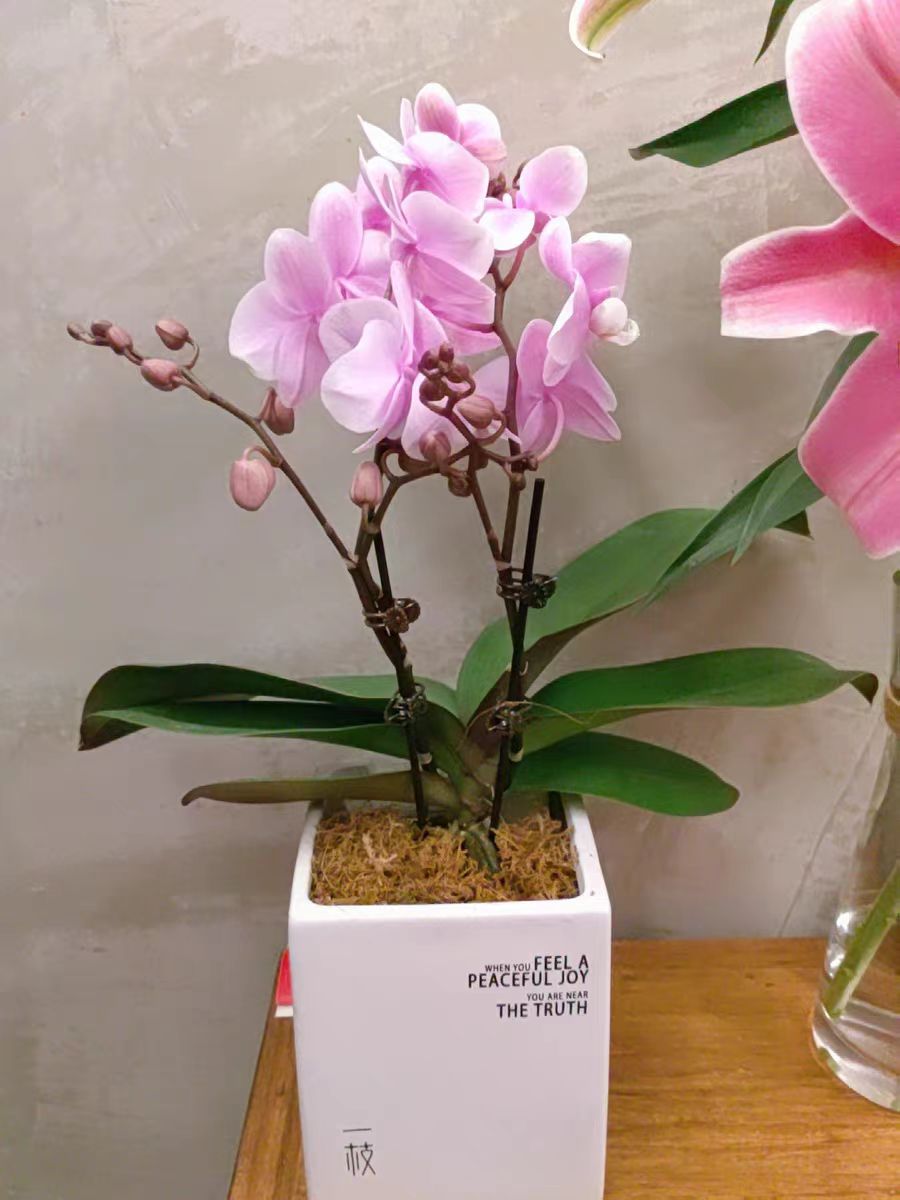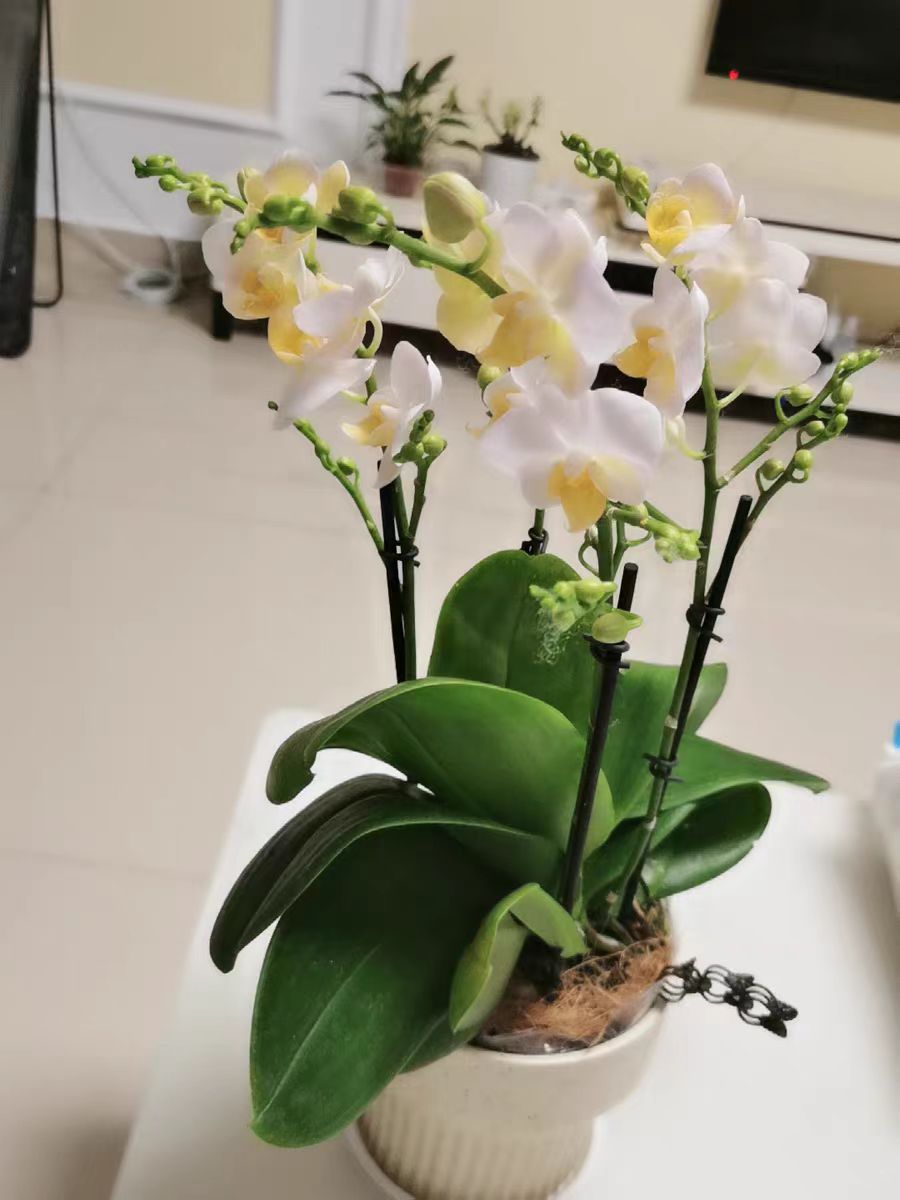During the daily cultivation process, Phalaenopsis sometimes experiences the phenomenon of burned roots or rotten roots, which makes many flower enthusiasts feel anxious. So, is it really impossible to save a Phalaenopsis with burned or rotten roots? The answer is: as long as it is properly dealt with, the Phalaenopsis still has the possibility of coming back to life and blooming again.
The main reasons for the burned roots or rotten roots of Phalaenopsis are as follows:
Improper fertilization: Excessive concentration or amount of fertilization will cause the substrate to heat up suddenly, burning the roots. Phalaenopsis prefers light fertilization. When fertilizing, the principle of "applying thin fertilizers frequently" should be followed, and the use of concentrated fertilizers or raw fertilizers should be avoided.
Excessive watering: The substrate of Phalaenopsis usually has good water retention. If watering is excessive, it is easy to cause the substrate to be overly wet, affecting the root respiration and thus leading to rotten roots. Watering should follow the principle of "watering when the substrate is dry", that is, water when the substrate is dry.
Unsuitable environment: Phalaenopsis is suitable for growing in a warm and well-ventilated environment. If the environmental temperature is too low or the ventilation is poor, it is easy to cause poor root growth and lead to rotten roots. In addition, if the substrate has poor drainage, it is also easy to cause waterlogging and rotten roots.
Pathogen invasion: In a high-temperature and high-humidity environment, pathogens are likely to breed. If the Phalaenopsis is invaded by pathogens, it will also lead to rotten roots.
When it is found that the Phalaenopsis has burned roots or rotten roots, the following measures should be taken in a timely manner for treatment:
Remove from the pot and clean: Take the Phalaenopsis out of the pot, gently loosen the substrate, and wash the roots with clean water. Pay attention not to damage the normal roots during the cleaning process.
Prune the rotten roots: Use a clean and disinfected pair of scissors to cut off the rotten root parts until the healthy roots are exposed. If the leaves are also rotten, they should be cut off together.
Disinfect and sterilize: Put the pruned roots into a carbendazim aqueous solution (usually prepared as a 1000-fold solution) and soak for about 30 minutes for sterilization treatment. Take them out after soaking and place them in a ventilated place to dry.
Replace the planting medium: Since the original planting medium may contain a large number of harmful bacteria, the new planting medium should be completely replaced. The new planting medium should have good air permeability and drainage, such as a mixture of sphagnum moss, bark, perlite, etc.
Repot: Spread a layer of the planting medium at the bottom of the pot, put the roots of the Phalaenopsis into the pot, fill it with the planting medium and press it slightly. Note not to press it too tightly to avoid affecting root respiration. After repotting, water it thoroughly and place it in a well-ventilated and brightly lit place for seedling recovery.
Later management: Do not fertilize during the seedling recovery period. When the Phalaenopsis starts to grow again, gradually resume normal management. Watering should follow the principle of "watering when the substrate is dry" to avoid waterlogging. At the same time, the environmental temperature should be kept appropriate, avoiding being too low or too high.
In order to prevent the occurrence of burned roots or rotten roots of Phalaenopsis, the following measures can be taken:
Reasonable fertilization: Follow the principle of "applying thin fertilizers frequently" and avoid using concentrated fertilizers or raw fertilizers. When fertilizing, dilute the fertilizer and pour it into the substrate.
Appropriate watering: Water in a timely manner according to the dryness of the substrate to avoid waterlogging caused by excessive watering. After watering, strengthen ventilation to promote water evaporation.
Improve the environment: Keep the environmental temperature appropriate, avoiding being too low or too high. At the same time, strengthen ventilation, reduce the environmental humidity, and reduce the breeding of pathogens.
Regularly repot: Regularly replace the new planting medium and pots for the Phalaenopsis to maintain a good growth environment for it.
In conclusion, it is not terrible if the Phalaenopsis has burned roots or rotten roots. As long as it is properly dealt with and preventive measures are taken in a timely manner, it still has the possibility of coming back to life and blooming again.
Can a Phalaenopsis with burned roots recover?

Share with
Tagged in :




Leave a Reply